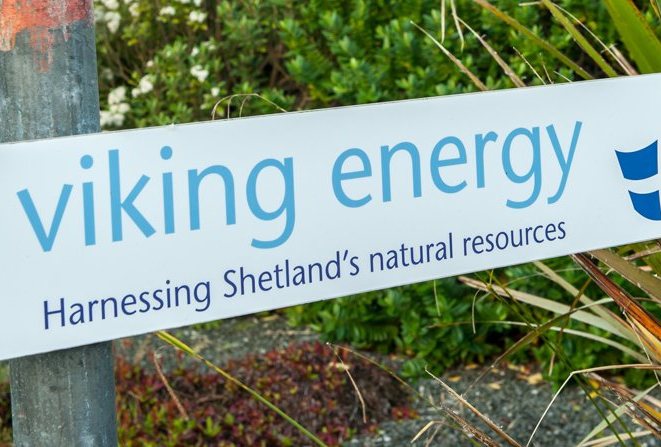‘Disappointed’ but still ‘committed’ – Viking Energy reacts to CfD decision

Viking Energy is “very disappointed” but still “committed” to developing its proposed 103-turbine windfarm in the Central Mainland, after missing out on a contract to generate renewable energy.
Despite the setback windfarm partner Scottish and Southern Energy (SSE) insisted the project would “ultimately” provide clean energy security and bring economic benefits for the isles.
The latest round of allocations in the UK governments Contract for Difference (CfD) scheme was announced this morning. Twelve projects were awarded contracts including six in Scotland.
Viking has issued a statement in reaction to the news that it is not one of them.
“Viking Energy Shetland (VES) is very disappointed with the outcome of the CfD auction but it remains committed to the project and will continue to work with Viking Energy Wind Farm to explore all possible options to enable the windfarm to be built.”
VES spokesman Aaron Priest said: “Shetland needs to reap the benefits of its world-class renewable energy resources. Shetland’s economy is over-dependent on oil and gas and has a fundamental need to diversify.
“Future generations in Shetland deserve the chance to utilise our abundant clean energy resources to create a new industry, jobs and prosperity in this community. We want to build a Shetland economy that is truly sustainable”.
SSE also reacted to the development expressing its disappointment. SSE Renewables is the powerhouse behind the windfarm plans and after taking over Shetland Charitable trust’s share in the project will provide any future funding for the scheme.
“SSE Renewables is disappointed it has been unsuccessful in securing a Contract for Difference (CfD) for its Viking windfarm.
“The auction cleared at strike prices of £41.61/MWh and £39.65/MWh. In keeping with its principle of financial discipline, SSE Renewables’ bid for Viking windfarm in the CfD auction was carefully considered so as not to take on inappropriate risks or accept returns on investment that are financially unsustainable.
“Viking windfarm, located in Shetland, has been developed by a partnership between SSE Renewables and Viking Energy Shetland (VES). In May 2019, the partners agreed that SSE will provide all future financing required to deliver the windfarm, with VES benefiting from a preferred return on its investment if the windfarm is built.
“The 103-turbine project has a planned capacity of up to 457MW, which is enough to power around half a million homes and avoid over half a million tonnes of CO2 emissions per year.”
“Viking is an important project that will ultimately contribute to Scottish and UK zero-carbon goals and will also underpin a new transmission link to the remote islands, providing security of clean energy supply and transformative economic benefits to island communities.
“SSE Renewables is committed to delivering this project. Central to progressing this project is the result of Ofgem’s consultation on Scottish Hydro Electric Power Distribution’s proposed contribution towards the new transmission link for Shetland.”
Steven Coutts, Leader of Shetland Islands Council, said: “Shetland still has a pressing need to diversify its economy. The development of renewables and the related interconnector remain a vital opportunity for our community.”
Shetland Islands Council’s political leader, Steven Coutts, said: “The council understands that SSE and Viking Energy Shetland remain committed to the project and will continue to work together to explore all possible options to enable the wind farm to be built.
“We understand that this will be dependent on Ofgem providing clarity on the financial contribution it intends to approve towards the cost of the Shetland electricity transmission link, recognising that an interconnector will be key infrastructure in securing electricity supply in Shetland for decades to come.”








Peter Hamilton
SIC Leader, Steven Coutts, should differentiate between economic activity and desirable sustainable economic activity. Not all economic activity is good for Shetland. His thinking seems twenty years out of date.
A smaller economy would not necessarily be bad. A well integrated local economy where Shetland became more self sufficient could be better than one highly vulnerable to external market swings.
John Graham once wrote of “rapacious merchants” being a threat to Shetland. We now have to be sceptical of grand schemes, particularly when they are driven by greed at the cost of the environment. Similarly, it is necessary now to take a skeptical look at Sullom Voe. The leaseholders are bidden to return the site to nature. That would take years and provide many jobs. Committing to a carbon free future for Shetland is the way ahead. Tell them to go.
SSE and the oil industry are not our friends. They exist to exploit Shetland not to serve. “Mair control o wir ain affairs” needs to be revisited by green economists.
It is not the job of the council to find the next big thing to keep Shetland afloat. They should have a rethink and take a perriewise safer approach.
Ian Tinkler
Why is Steven Coutts committed to SSE and Viking Energy, why does he regard countless millions of pounds being committed to a carbon-spewing interconnector as a Green option? Just how many tons of copper and plastic would go into that interconnector? Just how many thousands of tons of carbon sink peat would be destroyed by thousands of tons of highly alkaline carbon emmiting concrete poured into VE.
I have referred frequently to the ignorant Green lunatics, just what an example this man sets, has he any science at all in his reasoning or is he truly an ignorant sheep following the flock of Extinction Rebellion and Greta with her recent six flights across the Atlantic to enable sailing in the least carbon-friendly boat ever constructed. She should have gone in the Swan, considerably more carbon-friendly being made of wood than carbon compound, wind-powered and she would not need to poop in a bucket!!! Green lunacy at work, pure and simple.